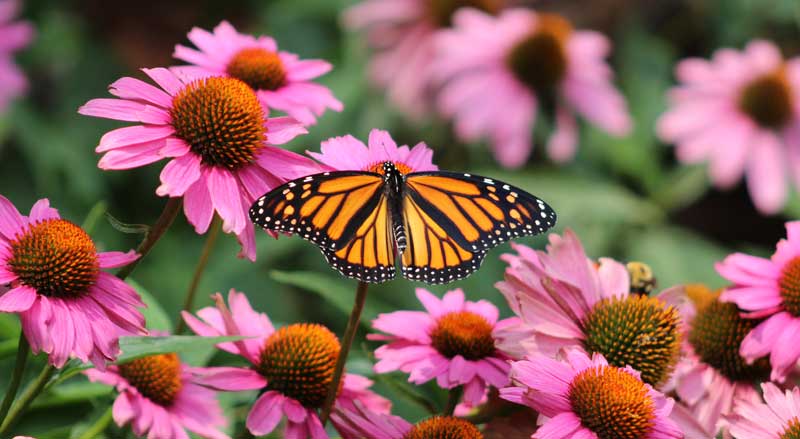Americans are increasingly mindful that their landscape is part of a larger ecosystem, and what they do to develop and maintain their gardens affects the greater environment.
You can enjoy your yard even more knowing it’s contributing to a healthier and sustainable environment. Read about five ways to make your landscape more eco-friendly.
What Makes a Landscape Eco-Friendly?
An eco-friendly landscape:
- Uses natural resources wisely
- Creates a habitat for helpful insects and animals
- Uses native plants
- Limits or eliminates the use of chemicals for pest control and fertilizers
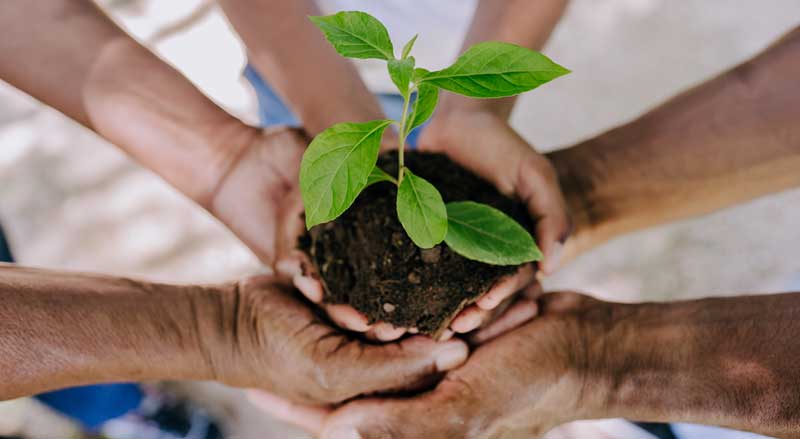
In short, an eco-friendly landscape will reduce your impact on the earth and help support a healthy ecosystem.
Another benefit of eco-friendly gardening is that you will reduce your need for energy, water, and maintenance—saving you both money and time.
Read about environmentally friendly, sustainable landscaping.
Let’s get started!
Create a Habitat for Pollinators
The nectar attracts pollinators to flowers; they subsequently carry pollen from one spot to another. It’s no exaggeration to say, people depend on pollinators to survive. In fact, it’s estimated that 80% of the world’s food crops and plant-based industrial crops need a pollinator to reproduce.
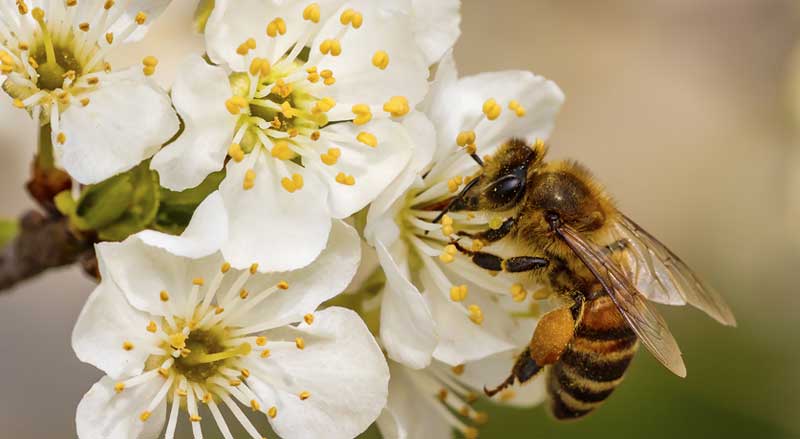
Pollinators include:
- Bees
- Birds
- Butterflies
- Flies
- Moths
- Beetles
- Small mammals
In New Jersey, bees pollinate many crops, including:
- Peaches
- Blueberries
- Cranberries
- Tomatoes
- Peppers
- Soybeans
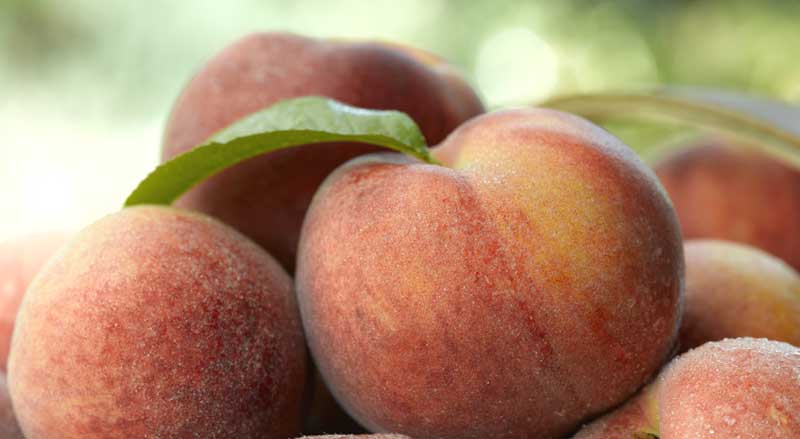
It’s easy to make your garden a friendly place for pollinators by planting flowers and other plants that attract native pollinators.
In New Jersey, plant brightly colored flowers that have a tubular shape for hummingbirds. Also add a hummingbird feeder to your garden that offers a sugar-water solution for the birds to drink.
Honeybees like to feed on blooming basil, chives, lavender, oregano, rosemary, and other plants. Include these in your vegetable garden.
Monarch Butterflies enjoy many types of milkweed.
Pollinators also look for a nearby water source in summer. Include an attractive birdbath or pot in your garden to hold water for them.
In the fall, natural leaf mulch or untrimmed perennials will provide a winter home for pollinating insects.
Establish a Compost Pile
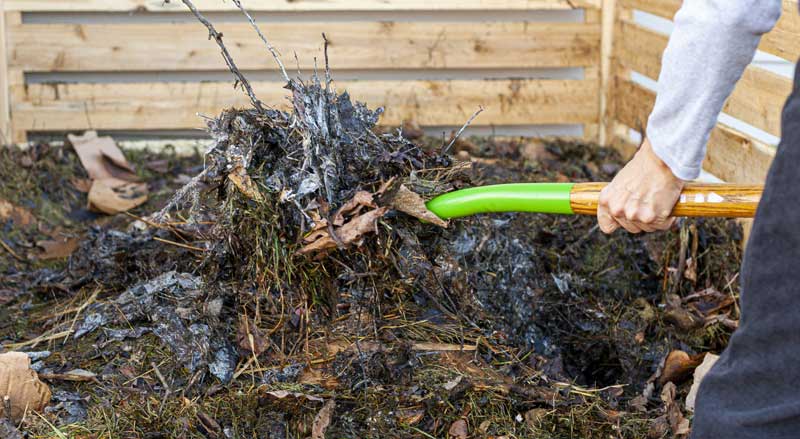
A compost pile in your yard offers many eco-friendly features, including:
- It will help your household and garden reduce its footprint in landfills
- You’ll be able to use the compost to fertilize your yard
You can compost some materials from the garden, such as:
- Fallen leaves
- Grass clippings
- Twigs
- Plant clippings
You can also compost food and other items from your home, including:
- Fruit waste
- Coffee grounds and teabags
- Vegetable peelings
- Cardboard egg boxes
- Crumpled up paper
However, don’t compost:
- Meat products
- Pet droppings (except for chicken manure)
- Glossy paper
- Weeds with seeds
- Large branches
House the actual compost pile in an enclosed container in your yard. You can make a compost container out of slatted boards or with wire fencing around some fence posts.
Periodically, add a layer of soil to speed decomposition. Eventually, you can use this organic waste as soil for your landscape, which is a great benefit over chemical fertilizers.
Composting is good for the environment because it keeps fresh garden and house products from ending up in landfills where they will produce greenhouse gases as they decompose.
Greenhouse gases trap heat, contribute to global warming, and cause many environmental problems.
Reduce Your Lawn’s Size and Use Lawn Cycling
When the lawn is smaller, you need less fossil fuel for mowing, less chemical spraying to treat lawn or insect problems, and less water for lawn growth.
Incorporate Hardscaping into Your Landscape
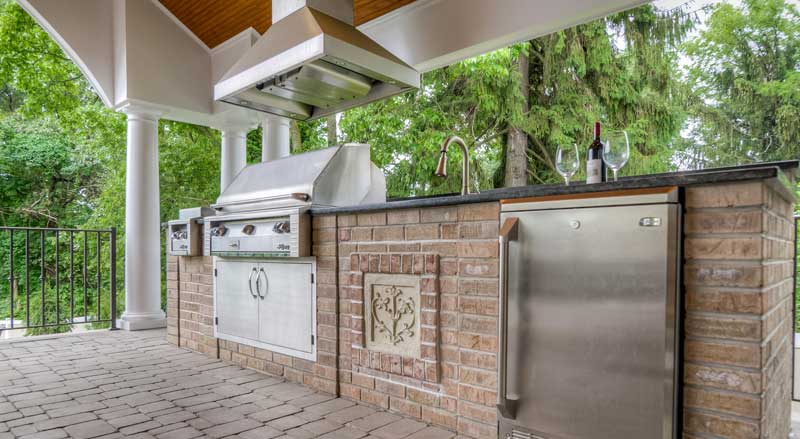
Instead of keeping a larger lawn, use some of your yard space for an exciting hardscaping project such as an outdoor kitchen, multi-level patio, firepit, or gazebo.
Read more about using stone in hardscaping.
Try Lawn Cycling
Lawn cycling involves leaving grass trimmings on the lawn after mowing instead of cleaning them up and removing them.
The grass trimmings function as mulch. The clippings will return lots of nutrients and water to the lawn—making it healthier and greener and reducing the need for fertilizer.
This natural mulch will also keep weeds at bay and reduce the need for pesticides.
Use Native Plants in Your Garden
An eco-friendly landscape always includes native species of plants. Since native plants thrive in their local ecosystem, they survive with less pampering and care from you.
Native plants will be acclimated to your area’s temperature fluctuations and soil conditions. And, if you experience extreme local conditions such as drought or excessive rain, native plants will have a much better chance of survival.
Native plants’ hardiness will pay off in their requiring less watering and needing less fertilizer or chemical pesticides.
Read about plants native to New Jersey.
Manage the Water on Your Landscape
Storm runoff is extremely dangerous to the environment—it finds its way into storm drains on its way to polluting our streams, rivers, lakes, and oceans. Runoff is full of chemicals from fertilizers and pesticides, bacteria, and other pollutants that are threatening our environment.
Wasting water during lawn watering is also an environmental concern—especially during droughts.
Here are ways to manage storm runoff and conserve water resources.
Use Permeable Hardscaping Materials
Use permeable building materials when building structures in your yard. A patio built with permeable pavers won’t add to water runoff issues the way cement or other non-permeable surfaces can.
Plant Trees
Plant trees in your landscape to absorb large amounts of water and reduce stormwater runoff.
Install a Rain Barrel
Install a rain barrel at the base of your roof’s downspout to collect water to use for watering your garden later.
Create a Rain Garden
An attractive rain garden can collect stormwater from:
- natural runoff from hills
- impervious surfaces such as driveways
- house gutters
For your rain garden, create a basin-like gathering area in your garden to hold the water temporarily. Include garden plants that enjoy saturated soils such as:
- River birch tree
- Hostas
- Sweetbay magnolia tree
- Hydrangea bush
The plants will remove many pollutants as they absorb the water and then slowly release it into the ground.
Contact us at Sponzilli Landscape Group where we specialize in organic lawn care, award-winning landscape design, and meticulous installation.

